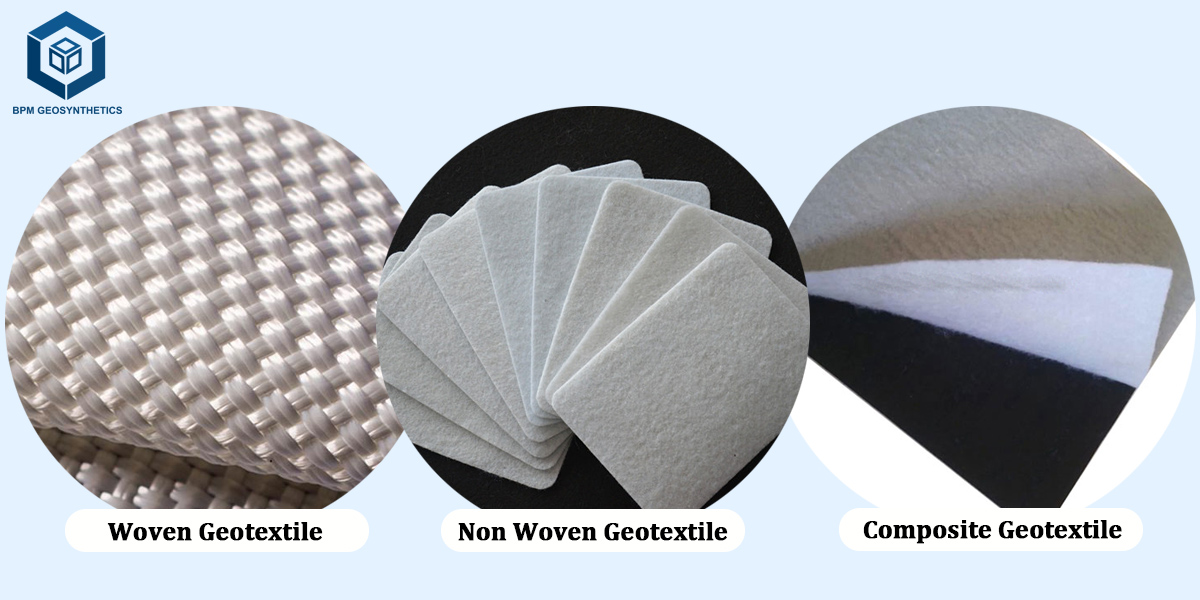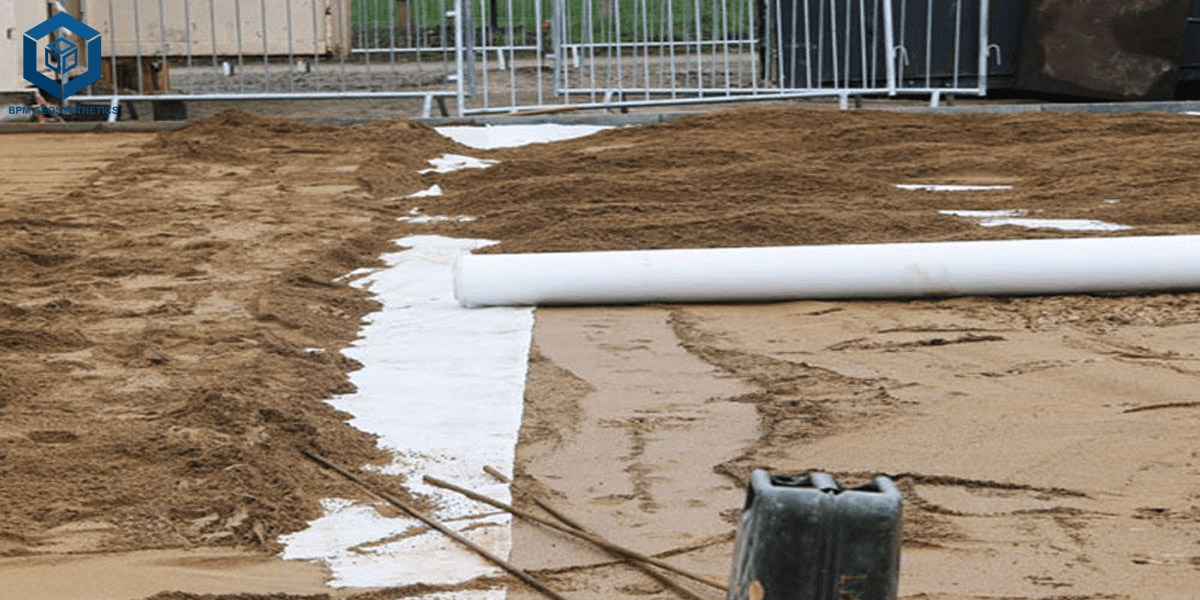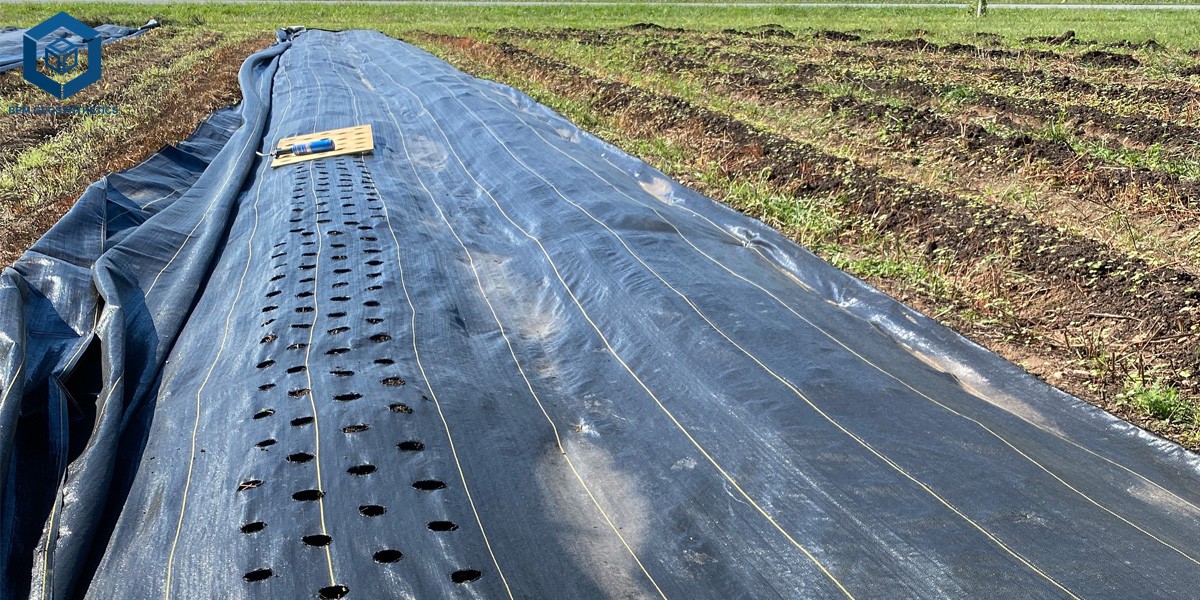Geotextile Polypropylene Fabric
Geotextile Polypropylene Fabric is a long lasting and versatile geosynthetic fabric made from fantastic polypropylene fibers, handy in woven and nonwoven forms. Designed to supply splendid strength, chemical resistance, and long-lasting performance, it is broadly used in civil engineering, street construction, drainage systems, erosion control, and landscaping applications. Its light-weight shape blended with excessive tensile energy makes it handy to installation whilst preserving most effective filtration, separation, and reinforcement capabilities.
- Material: 100% Virgin Polypropylene (PP)
- Functions: Filtration, Separation, Drainage, Reinforcement, Protection
- Features: UV Resistant, Chemical Resistant, Corrosion Resistant, Hydrophobic
- Color: White, Black, Orange, Green or Custom
- Weight Range: 100–1200 g/m²
- Permeability: High water glide price whilst conserving soil particles
- Standards: ISO, ASTM, EN compliant
Geotextile Polypropylene Fabric is a specialised geosynthetic material made from 100% virgin polypropylene PP fibers, engineered to supply long-lasting overall performance in civil engineering, environmental protection, and building projects. It is reachable in each woven and nonwoven types, every designed to fulfill exclusive engineering necessities such as soil stabilization, filtration, drainage, separation, and reinforcement.
Thanks to its hydrophobic nature, this cloth resists water absorption, making sure regular overall performance even in submerged or water-saturated conditions. It is an environmentally pleasant answer that combines strength, durability, and versatility, making it a favored preference in infrastructure and panorama engineering worldwide.
1. Geotextile Polypropylene Fabric Material Composition & Manufacturing Process
Polypropylene is a light-weight thermoplastic polymer valued for its excessive tensile strength, low moisture absorption, and splendid chemical resistance. These traits make it perfect for geotextile functions in each dry and moist environments. Polypropylene geotextile fabric are produced the use of 2 most important manufacturing techniques:
1.1 Woven Geotextile Polypropylene Fabric
- Manufactured through interlacing non-stop polypropylene yarns at proper angles (warp and weft).
- This procedure creates a dense, strong, and dimensionally steady cloth with low elongation, imparting outstanding load distribution and resistance to deformation.
- Commonly used for functions that require soil reinforcement, stabilization, and separation in avenue construction, embankments, and conserving structures.
1.2 Nonwoven Geotextile Polypropylene Fabric
- Produced through needle-punching or thermal bonding quick polypropylene fibers into a uniform, porous structure.
- Offers excessive permeability for environment friendly filtration and drainage whilst keeping soil retention.
- Ideal for functions such as subsurface drainage systems, erosion control, and geomembrane safety layers.
- Performance Enhancement Additives.During manufacturing, UV stabilizers can be delivered to defend the material from degradation prompted via extended daylight exposure.Anti-aging and antioxidant components can additionally be included to prolong carrier lifestyles in harsh environmental conditions.
2. Geotextile Polypropylene Fabric Key Features & Advantages
2.1 Geotextile Polypropylene Fabric - Exceptional Tensile Strength
- Engineered to face up to excessive mechanical stresses, this cloth affords most beneficial load-bearing capacity.
- Helps distribute utilized masses evenly, minimizing deformation and stopping soil displacement underneath traffic, heavy machinery, or structural pressure.
2.2 Geotextile Polypropylene Fabric - Long-Term Durability
- Manufactured from 100% virgin polypropylene, which is inherently resistant to rot, mildew, and organic degradation.
- Ensures a long time of dependable overall performance even when buried underground or uncovered to harsh environmental conditions.
2.3 Geotextile Polypropylene Fabric - UV & Chemical Resistance
- Contains stabilizers that enable it to suffer prolonged UV publicity except dropping strength.
- Maintains integrity when uncovered to a vast vary of chemical substances often current in soil, wastewater, and industrial environments.
2.4 Geotextile Polypropylene Fabric - Hydrophobic Properties
- Naturally repels water due to polypropylene’s non-absorbent molecular structure.
- Retains mechanical power and dimensional balance even in saturated soil or submerged applications, warding off swelling, warping, or weakening.
2.5 Geotextile Polypropylene Fabric - Efficient Filtration & Separation
- Specially designed pore shape allows water to ignore via freely whilst preserving soil particles.
- Prevents sediment migration, reduces clogging in drainage systems, and continues long-term filtration performance.
2.6 Geotextile Polypropylene Fabric - Lightweight & Flexible
- Easy to handle, cut, and transport to faraway or difficult-to-access job sites.
- Its flexibility approves set up over uneven floor surfaces barring compromising performance, lowering each labor time and set up costs.
3. Geotextile Polypropylene Fabric Technical Specifications
Parameter | Range / Options | Notes |
Material | 100% Virgin Polypropylene | Hydrophobic, high chemical resistance |
Type | Woven / Nonwoven | Needle-punched or woven yarns |
Weight Range | 100–1200 g/m² | Customizable |
Width | 1–8 m | Custom sizes available |
Roll Length | 50–200 m | According to project needs |
Tensile Strength | 8–50 kN/m | Depending on fabric type |
Elongation at Break | 15%–100% | Woven = lower elongation |
Color | White, Black, Grey, Custom | Branding possible |
Standards | ISO, ASTM, EN Compliant | Tested for quality |
4. Geotextile Polypropylene Fabric Customization Services
BPM offers complete customization picks for Geotextile Polypropylene Fabric, making sure the product meets the special specs and needs of every engineering project:
4.1 Geotextile Polypropylene Fabric Custom Dimensions
- We provide bendy cloth widths ranging from 1 meter up to 8 meters and roll lengths between 50 to 200 meters or more, tailor-made exactly to your venture scale.
- Fabric weight (GSM) can be adjusted from mild to heavy-duty preferences (100–1200 g/m²) to in shape unique load-bearing and filtration requirements.
- Custom sizing reduces waste and set up time by means of turning in substances that match your website online prerequisites perfectly.
4.2 Geotextile Polypropylene Fabric Color Options
- Standard colours encompass black and white, optimized for UV safety and visibility.
- For specialised functions or branding needs, we supply customized shade matching, permitting integration with undertaking aesthetics or company identity.
- Colored geotextile fabric can additionally beautify warmth reflection or absorption based totally on environmental needs.
4.3 Geotextile Polypropylene Fabric Performance Upgrades
- Enhanced UV stabilizers can be brought to notably enhance resistance to extended daylight exposure, extending the fabric’s out of doors lifespan.
- Chemical resistance enhancements defend the material in aggressive soil or contaminated water environments, such as mining or industrial waste sites.
- Increased puncture and tear resistance are handy thru denser weaving or fiber remedies to stand up to annoying mechanical stresses.
4.4 Geotextile Polypropylene Fabric OEM & Private Labeling
- We aid Original Equipment Manufacturer (OEM) services, offering custom-branded packaging, labeling, and documentation.
- This lets in distributors and contractors to market the material below their very own manufacturer whilst benefiting from BPM’s product quality.
- Packaging customization alternatives consist of rolls, bundles, or tailor-made gadgets for ease of managing and inventory management.
5. Geotextile Polypropylene Fabric Quality Assurance
Our Geotextile Polypropylene Fabric is produced underneath strict high-quality manipulate protocols in ISO-certified manufacturing facilities, making sure that each product meets the perfect requirements required through the world engineering community. To warranty regular overall performance and durability, every roll is subjected to a complete collection of exams based totally on internationally diagnosed requirements such as ASTM, ISO, and EN. These nice assurance measures include:
5.1 Geotextile Polypropylene Fabric - Tensile Strength Testing
- Measures the fabric’s capability to stand up to anxiety and stress barring breaking.
- Ensures the geotextile can aid heavy hundreds and hold structural integrity below operational conditions.
- Testing is carried out in accordance to standardized techniques to simulate real-world mechanical forces.
5.2 Geotextile Polypropylene Fabric - Puncture and Tear Resistance Checks
- Evaluates the fabric’s resistance to punctures brought on via sharp objects and tears from mechanical stress in the course of set up or service.
- Critical for functions the place the cloth is uncovered to difficult terrain, debris, or heavy equipment.
- Helps affirm sturdiness and toughness in stressful environments.
5.3 Geotextile Polypropylene Fabric - Permeability and Filtration Efficiency Tests
- Assesses the capability of the fabric to permit water drift whilst stopping soil particle migration.
- Ensures that drainage structures feature right besides clogging, preserving environmental and structural stability.
- Confirms that the fabric meets or exceeds enterprise filtration necessities for its supposed use.
5.4 Geotextile Polypropylene Fabric - UV Resistance Evaluations
- Tests the fabric’s capability to withstand degradation triggered with the aid of extended exposure to ultraviolet radiation.
- Includes accelerated weathering assessments that simulate prolonged out of doors conditions.
- Ensures that the material keeps strength, flexibility, and look over its carrier life.
These rigorous great assurance procedures assurance that BPM’s Geotextile Polypropylene Fabrics supply steady quality, dependable performance, and full compliance with global engineering standards, imparting peace of idea for engineers, contractors, and challenge proprietors worldwide.
6. Geotextile Polypropylene Fabric Application Areas
6.1 Geotextile Polypropylene Fabric for Road & Railway Construction
- Function: Acts as a quintessential separation and reinforcement layer between the subgrade soil and mixture base materials.
- Benefits: Prevents intermixing of gentle soil and gravel, which can motive pavement deformation and minimize lifespan. Improves load distribution and will increase avenue or railway durability.
- Example: In dual carriageway building projects, geotextile polypropylene cloth is laid underneath the asphalt layers to stabilize susceptible subgrades and lengthen pavement carrier existence via decreasing rutting and cracking.
6.2 Geotextile Polypropylene Fabric for Erosion Control & Slope Protection
- Function: Stabilizes soil on embankments, riverbanks, and coastal shorelines, stopping soil loss triggered through wind and water erosion.
- Benefits: Maintains slope integrity whilst permitting managed water flow, stopping floor runoff damage.
- Example: Along riverbanks, geotextile cloth is used beneath riprap stones to filter soil particles whilst securing the slope, efficiently lowering erosion in the course of seasonal floods.
6.3 Geotextile Polypropylene Fabric for Drainage Systems
- Function: Acts as a filtration layer in French drains, preserving walls, and subsoil drainage systems.
- Benefits: Allows water to pass by thru whilst stopping soil particles from clogging drainage pipes and gravel layers.
- Example: In residential construction, geotextile polypropylene cloth is set up round drainage pipes in the back of maintaining partitions to forestall soil intrusion and make certain long-term drainage efficiency.
6.4 Geotextile Polypropylene Fabric for Landfill & Environmental Engineering
- Function: Serves as a shielding cushion layer above geomembranes in landfill liners and waste containment systems.
- Benefits: Prevents puncture and harm to the impermeable liner, retaining the environmental seal and stopping leakage.
- Example: In municipal landfill projects, geotextile cloth is positioned over HDPE geomembranes to shield them from sharp waste substances and heavy machinery.
6.5 Geotextile Polypropylene Fabric for Landscaping & Agriculture
- Function: Used for weed control, soil separation, and water retention in gardens, parks, greenhouses, and agricultural fields.
- Benefits: Helps preserve soil structure, reduces water evaporation, and prevents weed growth, promotion healthful plant development.
- Example: In industrial landscaping, polypropylene geotextile is laid below ornamental gravel to separate soil and stop weed growth, bettering aesthetics and lowering maintenance.
6.6 Geotextile Polypropylene Fabric for Aquaculture & Water Containment
- Function: Acts as a separation and shielding layer in pond lining structures to isolate soil from water-proof geomembranes.
- Benefits: Protects liners from puncture, prevents soil infection of water, and helps hold steady aquatic environments.
- Example: In fish farming ponds, polypropylene geotextile material is mounted underneath HDPE liners to defend towards root penetration and sharp stones, making sure water fine and pond integrity.
7. Summarize
BPM Geosynthetics Geotextile Polypropylene Fabric – Strength, Protection, and Performance for Every Project
BPM Geotextile Polypropylene Fabric combines great strength, durability, and versatility to meet the stressful necessities of cutting-edge civil engineering, environmental protection, and landscaping projects. Backed through ISO-certified manufacturing and strict fantastic control, BPM ensures each roll gives you constant overall performance and lengthy carrier life. With complete customization preferences and verified area functions worldwide, BPM is your relied on companion for top notch geosynthetic solutions. Choose BPM Geotextile Polypropylene Fabric to tightly closed your project’s basis with reliability you can rely on.











